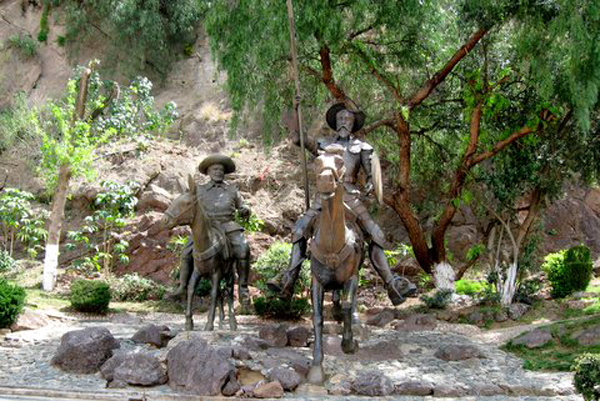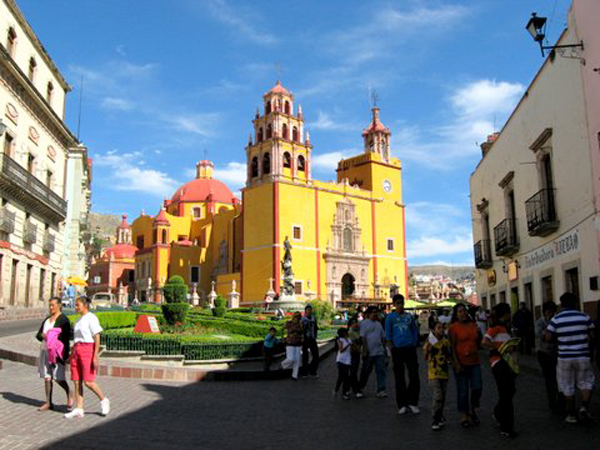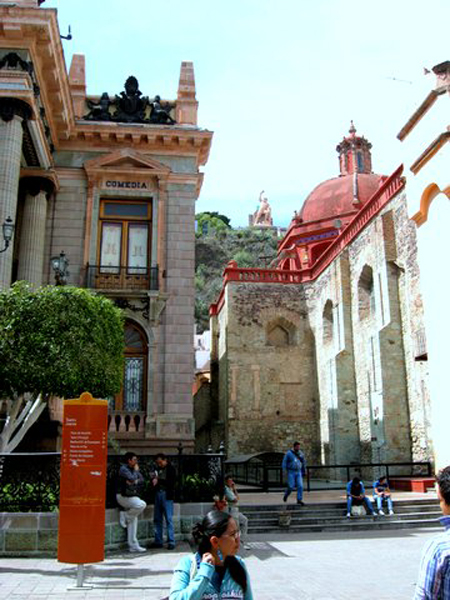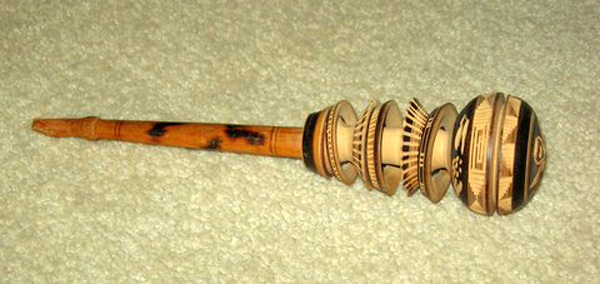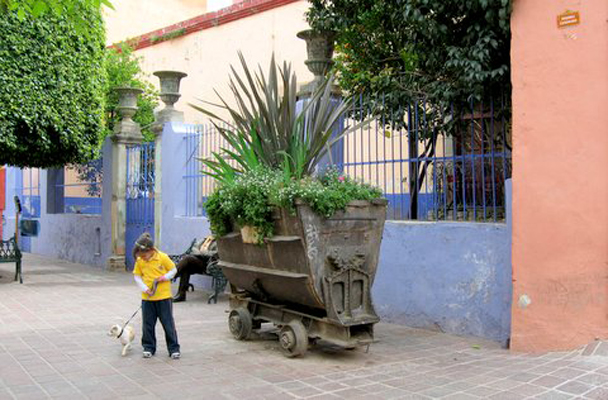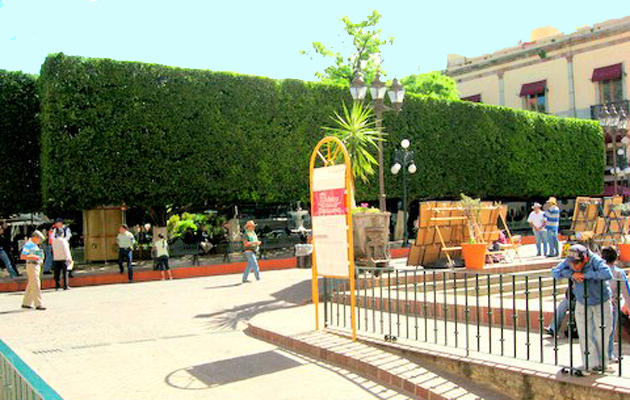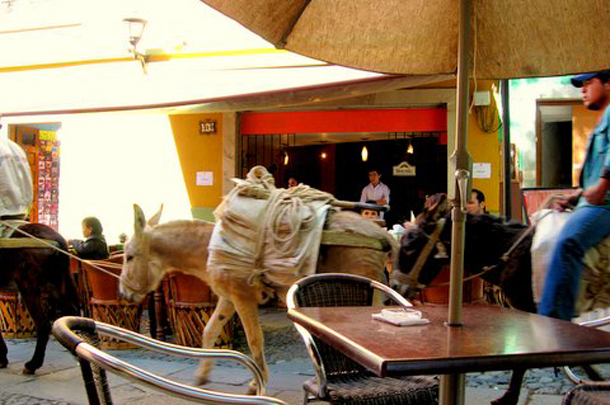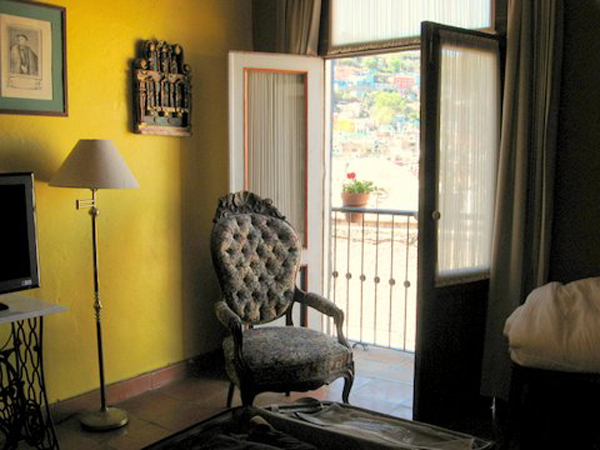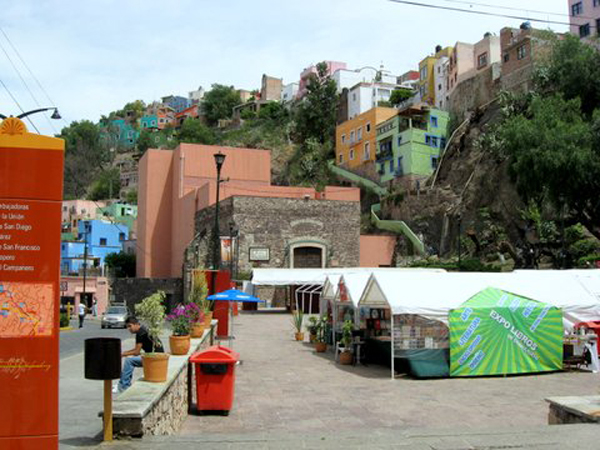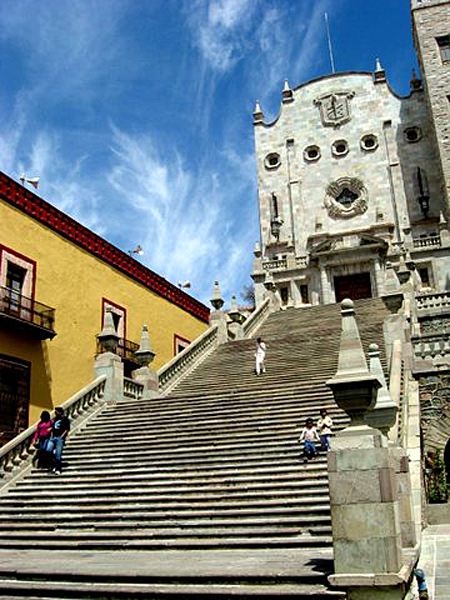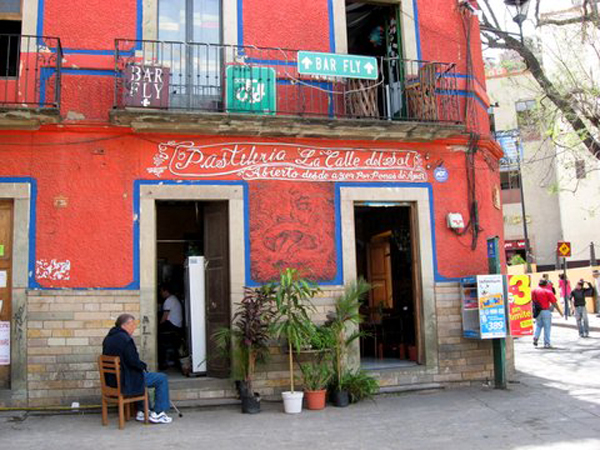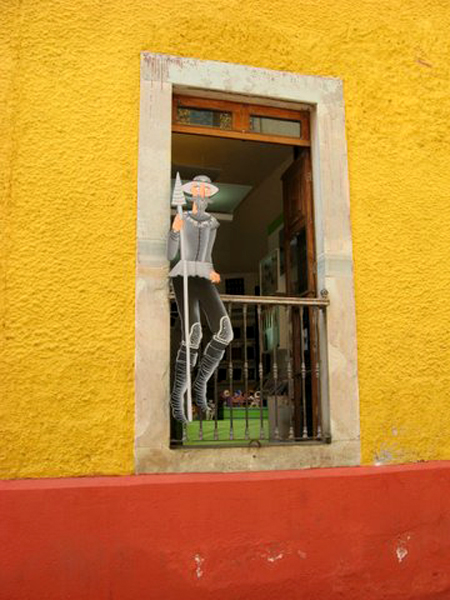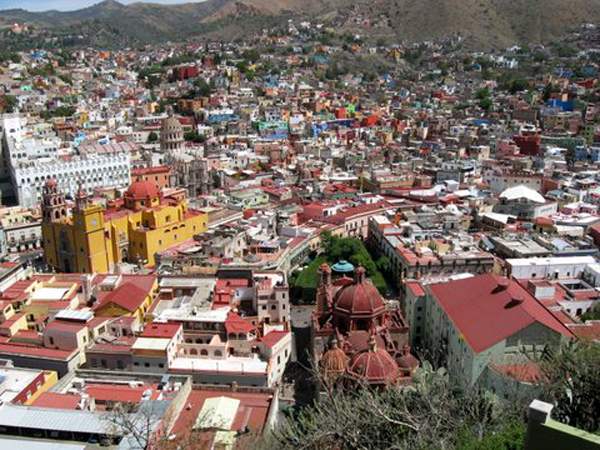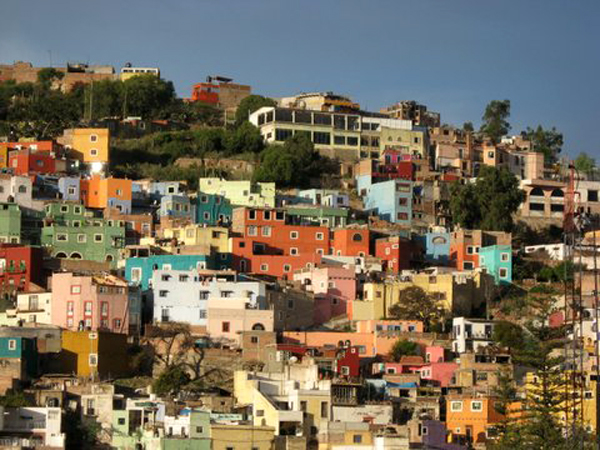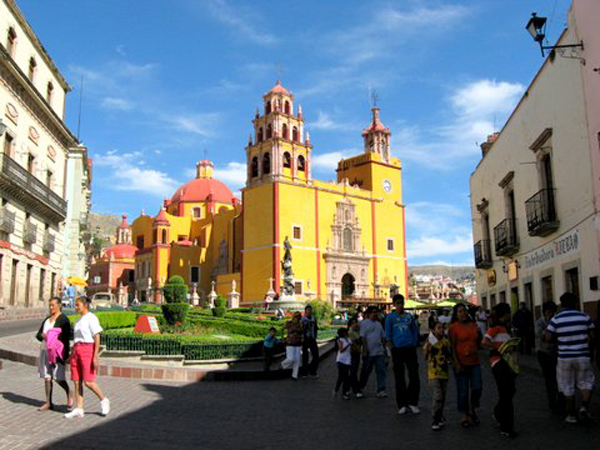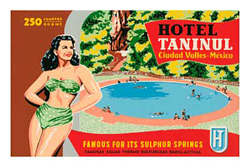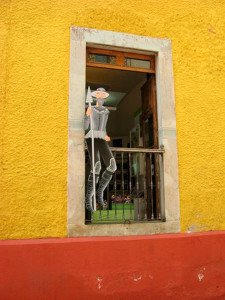 Forty-nine years ago this month, I arrived in Guanajuato after a five hour bus ride from Mexico City. I was a few days shy of my 19th birthday, a college student about to start an adventure that would change my life. Over the next three months I lived with an all-female, two-generation Mexican family and their ancient maid. I attended classes taught by professors from the University of Guanajuato, and was seduced by the culture, music, food and people of this colonial silver-mining city nestled in the mountains of Central Mexico.
Forty-nine years ago this month, I arrived in Guanajuato after a five hour bus ride from Mexico City. I was a few days shy of my 19th birthday, a college student about to start an adventure that would change my life. Over the next three months I lived with an all-female, two-generation Mexican family and their ancient maid. I attended classes taught by professors from the University of Guanajuato, and was seduced by the culture, music, food and people of this colonial silver-mining city nestled in the mountains of Central Mexico.
Almost twenty years later, my husband and I started visiting Mexico annually to escape harsh Chicago winters, yet I resisted returning to Guanajuato. I feared that if this idyllic town had changed, my magical memories of its perfection would be destroyed. As they say, “You can’t go home again.”
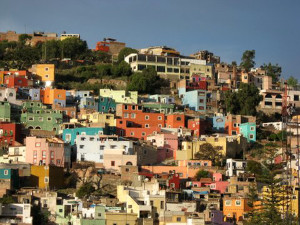 But when 2010 arrived I felt the time had come to take a chance on Guanajuato. After an on-line hotel search, I chose El Meson de Los Poetas on Positos Street. When I realized the hotel was on the same street as the house where I’d lived, I took it as a good omen. Each room in the restored 18th century colonial mansion is named after a different Spanish-language poet except the suite next to ours which was dedicated to Walt Whitman. Our room bore the name of Cuban poet Jose Marti.
But when 2010 arrived I felt the time had come to take a chance on Guanajuato. After an on-line hotel search, I chose El Meson de Los Poetas on Positos Street. When I realized the hotel was on the same street as the house where I’d lived, I took it as a good omen. Each room in the restored 18th century colonial mansion is named after a different Spanish-language poet except the suite next to ours which was dedicated to Walt Whitman. Our room bore the name of Cuban poet Jose Marti.
I needn’t have worried about Guanajuato changing drastically. The buildings seemed more colorful than I remembered, but most everything else looked the same. This shouldn’t have been a big surprise because Guanajuato was designated a UNESCO World Heritage Site in 1988, which means it can’t make significant changes to the central historic area.
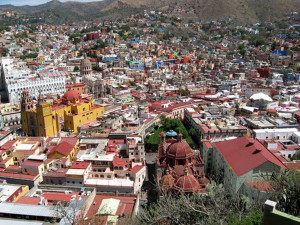 Despite an elaborate tangle of tunnels that funnel through traffic underneath the city, the narrow, twisting streets are filled with cars and buses inching their way through the center of town. There are neither traffic lights nor neon signs. The bells of countless cathedrals still toll. The steep, wide steps up to the University, founded in 1732, continue to be the place to meet-up with friends or eat a taco purchased from a street vendor.
Despite an elaborate tangle of tunnels that funnel through traffic underneath the city, the narrow, twisting streets are filled with cars and buses inching their way through the center of town. There are neither traffic lights nor neon signs. The bells of countless cathedrals still toll. The steep, wide steps up to the University, founded in 1732, continue to be the place to meet-up with friends or eat a taco purchased from a street vendor.
Last October these same steps became an outdoor theatre for an overflow audience eager to hear the Chicago Symphony Orchestra perform in the ornate 1903 Teatro Juarez during Guanajuato’s annual Cervantes Festival. The Teatro’s audience capacity is only 800, but the performance was broadcast via closed-circuit television to hundreds more aficionados sitting on the university steps several blocks away.
One welcome new amenity is the funicular that runs from the center of town up to the giant statue of local hero, Pipila, who looks out over the rooftops and tree-lined plazas below. I remember climbing a very steep path to Pipila back in 1964 and was relieved not to have to do so again, but if you want a good work-out, you can still hike to the top.
 One morning my husband and I were sipping hot chocolate at one of the outdoor cafes on charming San Fernando Plaza while I reminisced about burro trains that used to clickety-clack down the town’s cobblestone lanes. “But, of course, burros in town must be things of the past,” I concluded. Only minutes later we heard a noise, turned and saw a small burro train. I scrambled for the camera and got a couple of shots before they disappeared around a corner.
One morning my husband and I were sipping hot chocolate at one of the outdoor cafes on charming San Fernando Plaza while I reminisced about burro trains that used to clickety-clack down the town’s cobblestone lanes. “But, of course, burros in town must be things of the past,” I concluded. Only minutes later we heard a noise, turned and saw a small burro train. I scrambled for the camera and got a couple of shots before they disappeared around a corner.
There are enough diversions in this state capitol, once the richest city in Mexico, to keep an adventurous tourist busy for several weeks. The huge Art Nouveau Mercado Hidalgo is as bustling as I remembered, with vendors hawking produce, fresh meats, clothing and toys. When I was here as a student I purchased hand-carved walnut Christmas ornaments, a sisal mesh market tote, carved wood molinillos (a whisk for frothing hot chocolate) and miniature toys to take home as gifts.
Some of the finer examples of Guanajuato’s exquisite miniature work are housed in the city museum (Museo del Pueblo). Another point of interest is Diego Rivera’s childhood home, only a few doors away from the Poetas hotel. On display are examples of his seldom-seen early stages, before he began painting his famous murals.
 Farther along Positos Street is the Museo de la Alhondiga de Granaditas (the Granary). Its exhibits range from pre-Hispanic times through Mexico’s one hundred years of war. The pre-Hispanic section is particularly interesting for its collection of “sellos” – carved stamps used to communicate in “writing.” I was also fascinated by the Nahuatl poetry adorning the walls; a consistent theme of the verses was the transitory nature of life. The Alhondiga’s bookstore has an excellent selection of music, literature and books on art, architecture and the history of Guanajuato.
Farther along Positos Street is the Museo de la Alhondiga de Granaditas (the Granary). Its exhibits range from pre-Hispanic times through Mexico’s one hundred years of war. The pre-Hispanic section is particularly interesting for its collection of “sellos” – carved stamps used to communicate in “writing.” I was also fascinated by the Nahuatl poetry adorning the walls; a consistent theme of the verses was the transitory nature of life. The Alhondiga’s bookstore has an excellent selection of music, literature and books on art, architecture and the history of Guanajuato.
A few blocks east of the small triangle-shaped main plaza, Jardin de la Union, is another not-to-be-missed museum. The relatively new Museo Iconografico del Quijote celebrates all things “Don Quijote.” From all over the world, images, sculpture, jewelry, china, books, etc. prove that Quijote is a recognized and revered universal symbol.
There are many more museums and excursions to choose from, including Guanajuato’s famed mummy exhibit. I’ve never been tempted by the mummies, though they’re a big tourist attraction.
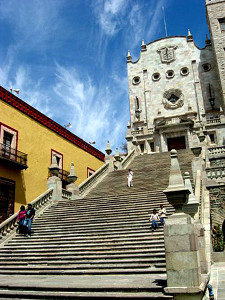 If you haven’t worn yourself out exploring Guanajuato’s narrow alleyways, called callejones, plan to spend an evening with the Estudiantinas, a group of minstrels dressed in Renaissance costumes. They wander the winding lanes singing traditional songs accompanied by accordions, guitars, mandolins and tambourines. Unlike in days of yore, you now have to buy a ticket to go callejoneando with them.
If you haven’t worn yourself out exploring Guanajuato’s narrow alleyways, called callejones, plan to spend an evening with the Estudiantinas, a group of minstrels dressed in Renaissance costumes. They wander the winding lanes singing traditional songs accompanied by accordions, guitars, mandolins and tambourines. Unlike in days of yore, you now have to buy a ticket to go callejoneando with them.
Seeing the Estudiantina in full garb completed my trip back in time. In 1964, one of my admirers hired such a group to sing to me outside the window of the house where I lived. It’s one of the most romantic things I ever experienced. This time, hearing their serenade with my husband at my side, confirmed my belief that seductive Guanjuato is the most romantic city in the world. When it comes to Guanajuato, you can go home again.
Candace George Thompson is the author of “Still Having Fun, A Portrait of the Military Marriage of Rex and Bettie George, 1941-2007,” a biography of her parents’ marriage and their life as a career Air Force family.
If you would like to read more about Candace’s Mexico adventures, see her essay in the Puerto Vallarta Writers Group 2013 anthology, “Coast Lines 2”
Visit Candace at FACEBOOK
Sancho Panza & Don Quixote at plaza Teatro Cervantes
Baroque Basilica de Nuestra Senora de Guanajuato
Young miner known as El Pipila, revolutionary hero
Gto, Pipila from Jardin de la Union
Molinillo for Hot Chocolate, Mexico - Candace George Thompson, Author
Silver mining cart/tram
Indian Bay Laurel tree hedge borders triangular Jardin de la Union, Guanajuato
Burro Train - Guanajuato - Candace George Thompson, Author
Balcony of room at El Meson de los Poetas, Gto 2010
Book fair in front of Teatro Cervantes, Gto
Guanajuato University - Candace George Thompson, Author
Bakery, Guanajuato - Candace George Thompson, Author
Cake bakery “open since yesterday because love hurts”; Teatro Cervantes plaza
Don Quixote in shop window
Known as the Royal City of Mines, Guanajuato was the richest city in Mexico
View from our room.
Baroque Basilica de Nuestra Senora de Guanajuato
